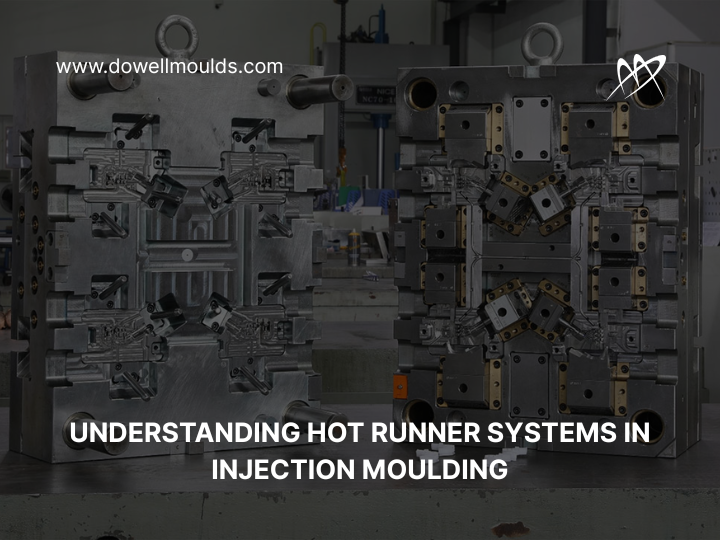Injection molding is a manufacturing process that produces plastic parts cost-effectively and sustainably. The vital and most noticeable enhancement in this field is the hot runner system, which significantly improves product quality, reduces waste and enhances production speed.
In this blog, we'll explore what a hot runner system is, how it works, its benefits, and its applications in various industries.
What is a Hot Runner System?
A hot runner system assembles heated components used in injection molding to deliver molten plastic directly into the mold cavities. Unlike a cold runner system, where excess material is left behind and must be trimmed or recycled, a hot runner keeps the plastic molten flowing continuously, eliminating waste and improving cycle times.
Hot runner systems are commonly used in high-volume production, where efficiency, precision, and cost-effectiveness are crucial.
Components of a Hot Runner System
A typical hot runner system consists of the following key components:
1. Manifold
- Distributes molten plastic evenly to different cavities in multi-cavity molds.
- Maintains uniform temperature to prevent material degradation.
2. Nozzles
- Inject molten plastic directly into the mold cavities.
- It can be designed as an open-gate (direct flow) or valve-gate (controlled flow) design.
3. Heaters & Temperature Controllers
- Ensure consistent plastic temperature to avoid defects.
- Precisely control heat distribution in the manifold and nozzles.
4. Flow Channels
- Maintain the molten state of plastic during injection.
- Prevents material cooling before entering the mold.
Types of Hot Runner Systems
There are two primary types of hot runner systems:
1. Open Gate Hot Runner System
How It Works:
-
The molten plastic flows directly into the mold cavity without a valve to control flow.
Best For:
- High-speed rapid production of simple parts.
- Applications where slight gate marks are acceptable.
2. Valve Gate Hot Runner System
How It Works:
-
It uses a mechanical valve to control the flow of molten plastic, ensuring a cleaner gate finish.
Best For:
- Precision parts require a high-quality surface finish.
- Automotive, medical, and electronics industries.
Advantages of Hot Runner Systems
Using a hot runner system in injection molding offers multiple benefits:
Reduced Material Waste
-
Removes runners, which reduces materials and plastics, thereby reducing costs.
Faster Cycle Times
-
Cooling and re-melting the runners is unnecessary, which leads to speedier manufacturing cycles.
Improved Product Quality
-
Maintaining consistent plastic temperature reduces defects like warping, shrinkage, or flow marks.
Better Energy Efficiency
-
requires lower processing than cold runners, which reduces the energy consumed.
Flexibility in Design
-
allows for more intricate and multi-cavity molds. This improves the efficiency of large-scale production.
Enhanced Automation
-
Reduces manual handling of excess material, improving production consistency.
Applications of Hot Runner Systems
Systems for hot runners are extensively employed in all industries that need top-quality plastic components that can be mass-produced. The most important applications are:
1. Automotive Industry
- Precision parts like dashboards, bumpers, and door panels.
- Make sure that you have strong, flawless plastic parts.
2. Medical Industry
- Used for syringes, IV components, and surgical tools.
- Provides high precision and hygienic production.
3. Packaging Industry
- It is ideal for caps, bottles, and food containers.
- Enables fast production of lightweight plastic products.
4. Consumer Electronics
- Produces casings for smartphones, laptops, and appliances.
- Maintains fine details and aesthetic quality.
5. Household Goods & Toys
- Used for kitchenware, plastic utensils, and children's toys.
- Reduces defects and improves surface finish.
Challenges of Using Hot Runner Systems
Despite the advantages, hot runner systems come with a few challenges:
Higher Initial Investment:
-
Moulds produced with hot runners cost more than cold runner ones.
Complex Maintenance:
-
It requires highly educated and more skilled technicians to control temperature and troubleshoot problems.
Risk of Plastic Degradation:
-
If temperature control is poor, plastic may degrade and affect product quality.
Conclusion
The hot runner system has changed the way injection molding is done by improving the speed of production, more efficient, and free of waste. While they do require more initial investments and upkeep, however, their long-term advantages include higher quality products, less materials waste and reduced cost of production, making their use the most preferred option for large-scale manufacturers.
Whether in automotive, medical, packaging, or electronics, hot runner technology can help you streamline production and improve your plastic molding efficiency.

